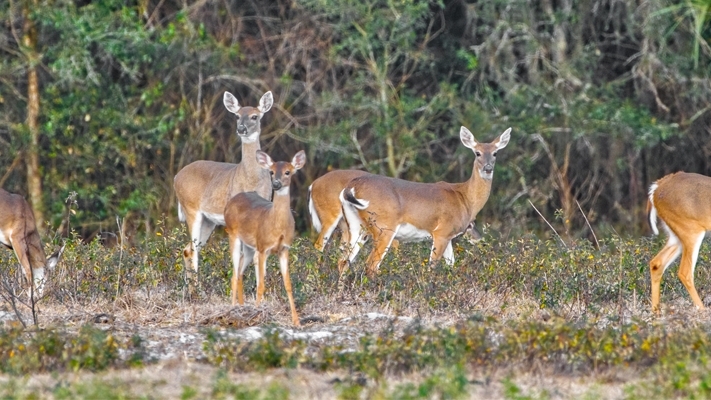NWDP: Chronic Wasting Disease in Wildlife

Chronic wasting disease (CWD) infects cervids (elk and deer). It is not known to infect other wildlife, livestock, or humans. CWD belongs to the family of diseases known as transmissible spongiform encephalopathies. The causative infectious agents are abnormal proteins called prions. There is no known treatment, and the mode of transmission is not well understood.
CWD has been found in North America, Norway, and South Korea. The distribution in North America has been increasing. As of April 2022, it has been detected in 30 U.S. States and 4 Canadian provinces in free-ranging cervids and/or commercial captive cervid facilities.
Affected Species
In the United States, CWD is known to infect a variety of wild species, including white-tailed deer, mule deer, black-tailed deer, elk, and moose. To date, there have been no reported cases of CWD transmission from animals to people. CWD belongs to a family of prion diseases or transmissible spongiform encephalopathies (TSEs) that cause rare progressive neurodegenerative disorders that affect both humans and animals. They are distinguished by long incubation periods, characteristic spongiform changes associated with neurologic loss and failure. The Centers for Disease Control and Prevention has more information on CWD, including prevention and general precautions for hunters and others handling potentially infected cervids.
NWDP Activities
Since 2020, the U.S. Federal Government has appropriated funds to further develop and implement cervid CWD surveillance, testing, management, and response activities, including further development and evaluation of techniques and strategies to prevent or control CWD in cervids. This funding is awarded to State Agencies, federally recognized Native American Tribal governments and Tribal organizations through a competitive process using cooperative agreements. APHIS Veterinary Services' Cervid Health Program administers these funding opportunities for farmed cervids. NWDP administers these funding opportunities for wild cervids.
View Chronic Wasting Disease Funding Opportunities
More Information
- Wildlife Services Program Information
- NWRC Chronic Wasting Disease Project
- Cervids: Chronic Wasting Disease
- USGS Expanding Distribution of CWD
- Prevention | Chronic Wasting Disease (CWD) | Prion Disease | CDC
Contact Us
National Wildlife Disease Program
The National Wildlife Disease Program works with partners nationwide to conduct disease monitoring and surveillance in wild animals and is the primary emergency response contact point within APHIS Wildlife Services. Our program coordinator is available for questions about wildlife disease monitoring and surveillance, the status of disease outbreaks and emerging disease events, and wildlife emergency response activities in natural disasters (floods, hurricanes, wildfires) or oil spills.
Julianna Lenoch
National Wildlife Disease Program Coordinator
Email: julianna.b.lenoch@usda.gov
Phone: 970-266-6350

